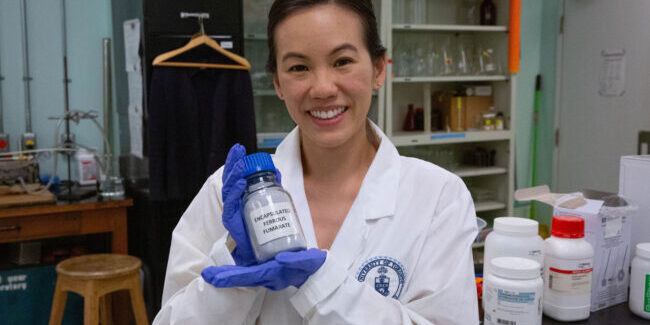At the 2016 I.I. Glass Lecture, Professor Raffaello D’Andrea (EngSci 9T1) left his audience with the whimsical words of Arthur C. Clarke: “Any sufficiently advanced technology is indistinguishable from magic.”
To the casual observer, much of D’Andrea’s work looks like magic. On April 25, 2016, a capacity audience gathered at the University of Toronto Institute for Aerospace Studies (UTIAS) to hear the U of T Engineering alumnus discuss his research into flying machines.
A world-renowned researcher, inventor, artist and entrepreneur, D’Andrea presented a handful of projects underway within his unit, the Institute for Dynamic Systems and Control (IDSC) at the Swiss Federal Institute of Technology (ETH). He focused on projects out of the Flying Machine Arena — a large, controlled environment at ETH devoted to the development and testing of flying machines, including quadrocopters, tailsitters and other aerial acrobats.
“We like to do things that haven’t been done before,” D’Andrea said of his colleagues and graduate students at the IDSC. “As opposed to a research group that has certain methodologies and then looks for applications of them, we tend to do the opposite. We look for things that haven’t been done before that are difficulty to do, and then we figure out how to do them.”
D’Andrea shared a behind-the-scenes look at one of his ambitious projects: the erection of a six-metre tall structure by four autonomous quadrocopters. During a four-day long, live exhibition at the FRAC Centre in Orléans, France, autonomous quadrocopters retrieved, lifted and placed 1,500 foam bricks to build the structure. The quadrocopters were governed solely by a computer program and had to accurately pick and place bricks while avoiding the other quadrocopters.
D’Andrea also highlighted several other projects out of the IDSC including rope bridges built by autonomous flying machines, machine flight with only one propeller, iterative learning algorithms and quadrocopters that can recover flight after the loss of a propeller. D’Andrea attributed the novel and creative projects emerging from the IDSC to his creative approach: “I actually don’t focus too much on applications. I really just focus on doing far-out stuff,” he said.
In closing, he expressed his optimism about the possibilities and potential for autonomous flying machine in the future. “I think there is something really magical about seeing things fly. I think that has a long life, so I’m excited about that.”
See more projects from D’Andrea and the team at the IDSC
The annual I.I. Glass Lecture is named after the late Professor Irvine Israel Glass — a former faculty member at UTIAS and renowned expert in the field of shock waves. Since 1996, the endowed speaker series has invited leaders in their field from all over the world to deliver engaging and inspiring lectures.




